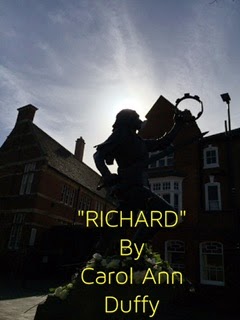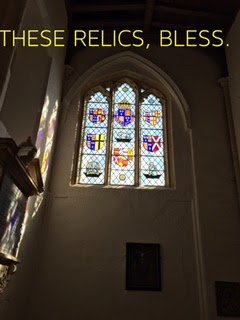When I was growing up, I had to walk to school each day, maybe half a mile or so. Unlike a lot of kids, I preferred to walk by myself, kicking a rock or a can down the street as I walked. There was something soothing, pleasant about doing this that attracted me.
I’ve kept this habit throughout the years, except that the “tin cans” I actually kick around now are ideas in my head. I look for patterns, trying to make little puzzle pieces fit or look at things in a different light. I read different sources, talk to different people with different life experiences than me, think about how people today would act under similar circumstances. It also helps that I’ve never seen the point of just accepting something because a lot of other people believe it. I’m more interested in WHY such things are believed wholeheartedly, without question. I find especially suspect ideas that people insist you cannot challenge, or must accept, because if you don’t, it just means you “haven’t read all the sources.” (Well, perhaps I HAVE, but I have questions I’d like to have answered first, thanks.)
And so it is with all the wonderful little puzzles that make up the life of Richard III. With the “traditional” view consistently being challenged (more than ever now that his remains have been found & all the interest his reinterment in Leicester continues to generate), and revisionist theories sometimes confused with historical fiction wishful thinking, this “can kicking” technique has lead me to some rather interesting ideas.
For example, the belief, stemming from historical fiction, that Richard was the one who convinced his brother George to reunite with Edward. Lots of people believe it, & so did I, until someone asked me a simple question “Have you read 'The Arrivall of Edward IV?'” Well, no, I hadn’t, but I quickly looked it up & read the relevant portion regarding Edward, George, & Richard. As it turns out, it was Cecily Neville & her daughters who put the pressure on George to switch sides. I’m sure it didn’t escape George’s notice that if Edward won, Warwick would either be dead or executed, & his lands & wealth forfeit. Who better to take over all that wealth than Warwick’s own son-in-law? I’m just speculating here, but what if that was the bait Edward had his mother & sisters use to reel George in?
And what about Richard? Much is made, in contemporary sources & sometimes exaggerated in historical fiction, of his loyalty to his brother, Edward, in such a trying time. While it may have made sense to jump sides & go with Warwick, Richard chose to remain loyal to Edward. Could part of that reason why have been Richard looking at those same Warwick lands & wealth? I’m sure by now some heads are exploding because this idea challenges the Saint Richard of Plantagenet view of his loyalty, but it is only human to consider your own best interests in making decisions. Counting on Edward winning his crown back was a huge gamble, but it would mean both Warwick AND George out of the way & again, all those lovely Warwick lands & wealth there just waiting for someone to get them. He wouldn’t even have to marry Isabel or Anne to get them, either, which is just as well seeing as how they were (or became) married women.
Speculation: If Richard thought he would be getting all the Warwick inheritance for himself, perhaps he was not so pleased as we’ve been lead to think when George reconciled with Edward. While “The Arrivall” describes the reconciliation in extraordinary detail & states that Richard & George made pleasantries, you have to remember that they were “on stage” at that point. Public behavior is many times the exact opposite of private behavior. The war was still on & any public sign of dissension in the ranks, especially among the three York brothers, would have been widely reported & remarked upon. But everyone behaved themselves & did the 15th Century equivalent of playing nice for the cameras. But oh to be a fly on the wall once the doors were shut & it was just those three alone in a room together.
As we all know, Edward triumphed over the Lancastrians & Warwick, with Warwick & Henry VI’s son dying in battle. (Well, that solved a couple of problems.) But now, if you’re Edward & you’re smart, you’re not quite so certain that one man should be in control of all of Warwick’s domain. Especially if that man has already demonstrated a lack of loyalty & a willingness to take up arms against you. So, how do you go about solving this conundrum, seeing as how you’ve already forgiven your brother & so can’t attaint him, taking away his wife’s inheritance? Wouldn’t you find it handy that there is another Warwick daughter, recently widowed, who you can pair up with your baby brother?
This would mean, of course, that Richard & Anne were not childhood sweethearts (& really, they couldn’t have been, seeing as how he was 4 years older than she was & what 13-year-old in his right mind gets a crush on a 9-year-old?). I can hear more heads exploding at this point, but in reality, the idea that you marry the person you’re in love with is a relatively recent invention. In medieval times, people got married because the match was a good one to progress the families’ interests, not the couple’s. They may have been friends & liked each other, or even felt affection towards each other, but “riding off in the sunset together” soulmate love? Nope.
(More heresy: I sometimes wonder if Anne thought becoming the Duchess of Gloucester was a demotion from being the Princess of Wales, even if it meant she didn’t have to live out her days in a convent. I’m not sold on the image of a goody-goody, pale & frail Anne Neville. She wasn’t raised to be sweet & innocent.)
So, with Edward’s blessing, Richard goes off in search of Anne, while Edward publicly tells Richard to find another bride, like say, maybe, Isabella of Castile, in order to keep George happy & off his back. We all know at this point what happened: Richard & Anne married secretly (funny this is never a problem for THEIR marriage :cough:precontract:cough: ), George had a massive cow (pun intended), Richard gave up some titles & some of the Warwick inheritance to make George happy, & Edward had successfully divided said inheritance up so that one man could not control it & use it to challenge his throne.
See how that works?
Maybe this is how it all happened. Maybe it isn't. That's the beauty of the life of Richard III. So many possibilities, so many questions to keep people intrigued over 500 years on.



















































.jpg)
